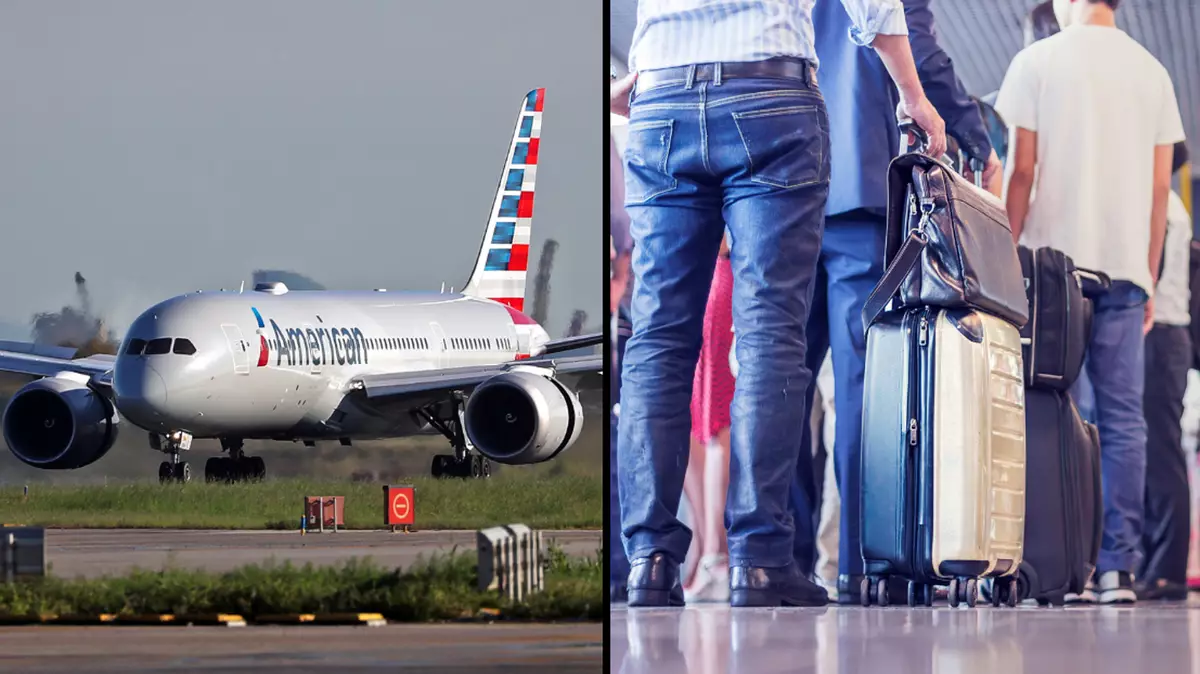The Rules for Traveling to Europe Are About to Change

Europe is the most visited region in the world—but it will soon require a few extra steps to get there. U.S. citizens already dreaming about and plotting out their 2025 adventures across the pond should be aware that the rules for entry into the European Schengen Zone are about to change.
Initially meant to go into effect January 1, 2021, but delayed several times, the new European Travel Information and Authorization System (ETIAS) is now slated to launch during the first half of 2025, though no exact date has been provided yet. Once it goes into effect, all U.S. citizens who want to travel to the 29 member countries of Europe’s Schengen Zone will need to register with ETIAS or risk being turned away at the border.
Here’s everything you need to know about the new ETIAS process.
Why are the requirements for entering Europe changing?
The European Union decided to implement this new travel authorization program to protect and strengthen its borders amid mounting terror threats in Europe. By requiring visitors to register, the European Union hopes to be able to identify any possible threats or risks associated with travelers coming into the participating countries before they arrive.
Which European nations will require ETIAS authorization to visit?
The new travel authorization applies to those entering any member country of Europe’s Schengen Zone. Currently, that includes 23 countries that are also members of the European Union, six non-EU countries, plus three European micro-states—32 countries and territories in total. That means that you’ll need to register to enter:
- Austria
- Belgium
- Bulgaria
- Croatia
- Czech Republic
- Denmark
- Estonia
- Finland
- France
- Germany
- Greece
- Hungary
- Iceland
- Italy
- Latvia
- Liechtenstein
- Lithuania
- Luxembourg
- Malta
- Monaco
- Netherlands
- Norway
- Poland
- Portugal
- Romania
- San Marino
- Slovakia
- Slovenia
- Spain
- Sweden
- Switzerland
- Vatican City
However, many European nations still aren’t part of the Schengen Zone, mostly in Eastern Europe. That means you’ll be able to travel to Albania, Andorra, Armenia, Azerbaijan, Belarus, Bosnia and Herzegovina, Cyprus, Georgia, Kosovo, Macedonia, Moldova, Montenegro, Serbia, Türkiye, and Ukraine without an ETIAS registration.
Who will need to obtain ETIAS authorization?
American citizens, as well as travelers from 60 other countries, will require an ETIAS visa waiver to travel to any of the Schengen Zone countries for short stays once the ETIAS program goes into effect. The list of ETIAS-eligible countries includes Canada, Mexico, Australia, and many more. All travelers, regardless of their age, will need their ETIAS approval to travel to Europe’s Schengen Zone countries.
How do you apply for ETIAS?
Once the ETIAS application is available online, it should only take about 10 minutes to fill out the form, according to ETIAS.com, a site that provides news and information regarding the new travel authorization process. To apply, you’ll need a valid U.S. passport, an email address, and a debit or credit card to pay the nonrefundable seven-euro application fee, which applies to individuals between the ages of 18 and 70. Those under the age of 18 or over 70 still need to have an ETIAS but will not be charged.
How much will it cost to enter Europe?
Obtaining an ETIAS registration requires a nonrefundable application fee of seven euros (US$7.75, based on conversion rates at time of publication). Only travelers younger than 18 years old or older than 70 years old will be exempt from the fee (though they will still need to have ETIAS approval). There are no other fees associated with the program.
How long will the ETIAS process take?
After you fill out your application online with the personal information on your passport and answer a series of security and health-related questions, your ETIAS application will be processed immediately, and you will receive an email confirming that your ETIAS has been approved within 96 hours.
“We strongly advise you to obtain the ETIAS travel authorization before you buy your tickets and book your hotels. Most applications will be processed within minutes and at the latest within 96 hours. However, some applicants may be asked to provide additional information or documentation or to participate in an interview with national authorities, which may take up to [an] additional 30 days,” the European Union states in the FAQ section of its ETIAS page.
Will you have to reapply for each trip to Europe?
No, you will not need to reapply after each trip to Europe. After you apply for the first time, your ETIAS authorization will be valid for three years or until your passport expires, whichever comes first. Because the ETIAS is valid for short-term stays of up to 90 days for both leisure and business travelers, you’ll be able to reenter Europe multiple times within that three-year period without renewing it, as long as your stay doesn’t exceed 90 days within a 180-day period. Those who want to study or work in Europe will need to apply for a proper work or study visa.
Does this mean I will need a visa to travel to Europe?
ETIAS is not a visa; it’s a travel authorization requirement for visa-free visitors, similar to the U.S. Electronic System for Travel Authorization (ESTA).
The new entry requirement “is more accurately referred to as a visa-waiver. The ETIAS, like the ESTA, is a travel authorization for travelers not requiring a visa to visit Europe. Under the ETIAS, these visitors will undergo additional security checks prior to being permitted to enter the EU. The ETIAS will be mandatory for citizens of such countries as the United States, Australia, New Zealand, and Canada,” states ETIAS.com.
In other words, ETIAS will only prescreen travelers who do not need a Schengen visa.
“An ETIAS travel authorization does not reintroduce visa-like obligations,” according to a fact sheet provided by the European Commission. “There is no need to go to a consulate to make an application, no biometric data is collected and significantly less information is gathered than during a visa application procedure.”
Why was the launch of ETIAS delayed?
Initially meant to come into effect on January 1, 2021, the ETIAS was first delayed until January 1, 2023, and then several more times until 2024. It is now slated to enter into operation during the first half of 2025, due to delays in the anticipated adoption of the ETIAS regulation, plus the fact that ETIAS is being developed closely with the Entry/Exit System (EES). The EES was scheduled to launch in May 2023 but is now scheduled to go into effect in November 2024. The EES is an electronic system that will keep track of visitors as they cross borders, and its installation is a precondition for ETIAS to enter into operation.
When exactly will ETIAS go into effect?
The ETIAS travel entry requirement is now scheduled to launch during the first half of 2025, following the establishment of Europe’s new tech-driven EES that is slated to go into effect in the fall of 2024.
Once ETIAS goes into effect, a transitional period of six months will follow. During that time frame, the countries requiring the travel authorization will have to inform travelers of the new regulations. Travelers will still be allowed to cross borders during that six-month period without the ETIAS. The six-month transitional period will be followed by a grace period, the length of which has not yet been determined. During the grace period, the ETIAS requirement will apply unless it’s a traveler’s first time entering Europe since the end of the transitional period.
This article was originally published in 2019. It was most recently updated on September 9, 2024, to include current information.
Related
Hilton Partners with American Campus Communities to Offer Exclusive Benefits…
Home » America Travel News » Hilton Partners with American Campus Communities to Offer Exclusive Benefits for Students Saturday, November 23, 2024Hilton, a g
Trump and Elon Musk bring American swagger, joyous awe back…
At his Madison Square Garden event a week before the election, Donald Trump went on an extended riff about the famous “chopstick” maneuver of Elo
Major airline introduces new boarding rule at 100 airports to…
Few things test our patience quite like waiting in line—especially when someone skips ahead.For travellers, the issue is particularly aggravating at boarding
USA travel warning issued after ‘chaos’ habit banned from 100…
Published 18:00 22 Nov 2024 GMTIntroduced at dozens of airports across the States, it'll impact countless travellersA crackdown on a 'chaotic' hack used by coun









